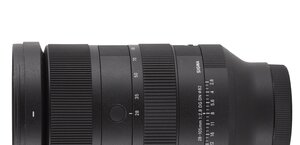Carl Zeiss Apo Sonnar T* 135 mm f/2.0 ZE/ZF.2
4. Image resolution

In the centre of the frame, already at the maximum relative aperture, the lens reaches a level of 45 lpmm. This value is so high that we would consider the tested instrument very good even if it was the peak of its possibilities. Meanwhile it is just a beginning. By f/2.8-5.6 the MTFs get to truly record-breaking level of 47-49 lpmm. In order to realize how brilliant such a result is you might remind yourself that the maximum value reached by the incredibly expensive and optically great Nikkor AF-S 200 mm f/2G ED VRII was 47 lpmm.
Please Support UsIf you enjoy our reviews and articles, and you want us to continue our work please, support our website by donating through PayPal. The funds are going to be used for paying our editorial team, renting servers, and equipping our testing studio; only that way we will be able to continue providing you interesting content for free. |
- - - - - - - - - - - - - - - - - - - - - - - - - - - - - - - - - - - - - - - - - - - - - - - -
When it comes to the edge of the APS-C sensor the results are nearly as outstanding as in the frame centre. Already at the maximum relative aperture the MTFs go over 44 lpmm and, on slight stopping down, they even increase to almost 48 lpmm. The edge of full frame can be described in similar terms. There are simply no weak points here. If any other fixed-focus lens got in the frame centre such results as the Zeiss presents on the edge of the full frame we would still praise it for good image quality. It’s enough to add that the resolution level the Zeiss gets in the very frame corners without breaking out into a sweat would be difficult to achieve by many expensive zoom lenses in the frame centre. Hats off – there’s nothing left to say!
At the end of this chapter traditionally we present crops taken from the frame centre of our resolution testing charts.
 |






